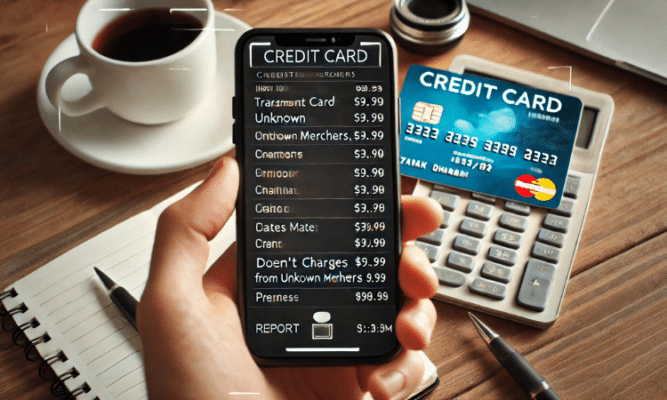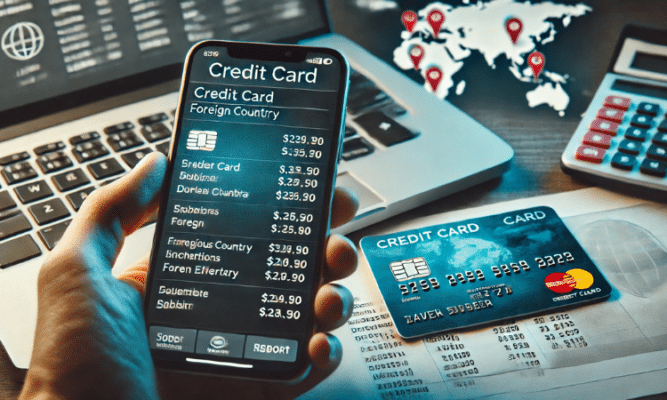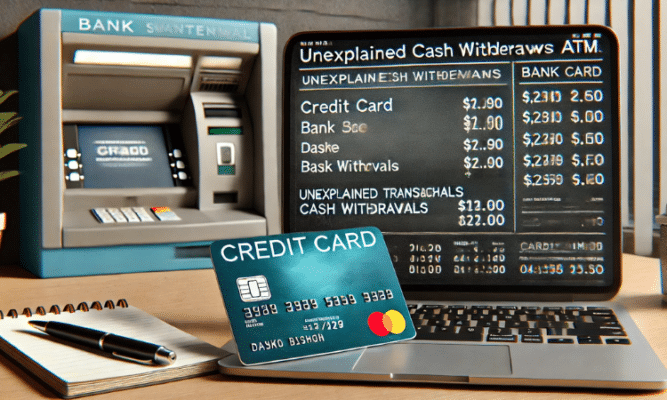Shopping and spending habits of Americans are rapidly changing. Sounds good because it clearly indicates that Americans are aware of latest trends and technologies while shopping and transacting, both online and offline and are adapting well.
Unfortunately, such shifts in spending and shopping have come to the US with a major pitfall: the burgeoning of credit card frauds affecting Americans of all ages and income groups, ethnicities and gender.
As with most cases, you have several options to avoid falling prey to credit card fraud. The first one, that’s next to impossible in the US is to stop using credit cards altogether. The second one is by reducing spending on credit cards and use them only when absolutely necessary. This too isn’t a panacea to escape credit card fraud.
The third and the best option, in my personal opinion is to take some simple yet prudent steps to avoid falling victim to a credit card fraud.
Therefore, in this article, I will discuss the best steps and precautions you could take to safeguard your credit cards. Yes, I said credit cards because most Americans own more than one of these and each merits equal protection against felons and scammers.
If you’ve not yet been targeted by credit card fraudsters, it’s easy to dismiss this article. But wait. Be assured that such complacency wouldn’t last long and someday, sooner or later, your credit card too could fall prey to such scammers.
Why am I saying so? The below facts and figures on credit card fraud will reveal amply.
Stats of Credit Card Fraud in USA
Some 60 percent of American credit card holders were victimized by fraud in 2023 and 2024, according to a report by credit ratings and financial company, Experian. Over 52 million Americans had fraudulent charges on their credit card totaling whopping $5 billion, the report adds.
Shockingly, only about seven percent credit cards with fraudulent charges were reported lost or stolen – a clear indicator that scammers accessed credit card data by exploiting risky habits of these credit card owners.
The Experian report further reveals, 45 percent of all credit card holders in USA were victimized more than once while only 15 percent of cases were first timers.
Additionally, the fraud amount on credit cards has also risen. In 2022, the median amount lost to credit card fraud stood at $79 which rose to a stunning $100 per card in 2024. Over 50 percent of fraudulent charges were worth $100 while one out of five such charges were of $500 or more.
It’s widely believed that some four percent of credit card fraud victims contacted law enforcement agencies while others contacted their banks or other issuers. Among these, only 49 percent of victims had their charges reversed or refunded while four percent are yet to get any refunds or reversal of charges. In about 47 percent of all cases, the issuers blocked all transactions on a credit card when fraud was reported, the Experian report further details.
Another shocker comes from Nilson Report, which adds that credit cards issued in the US during 2023 accounted for 25.29 percent of the global total but for 42.32 percent of the losses due to credit card fraud in the world.
This proves that credit cards in the US are widely targeted by fraudsters within and outside America.
Credit Card Fraud v/s Identity Theft
The above stats might make you wonder whether credit card fraud and identity theft are the same. Because, credit card and financial fraud is also part of identity theft.
No, they’re not.
Credit card fraud and identity theft are two distinct crimes.
While credit card theft involves unauthorized spending and is usually limited to financial losses, identity theft has much broader implications. Identity theft involves scammers accessing all your personal info and gaining access to Social Security, banking and financial information, creating fake ID cards and driving licenses, among other things.
At the same time, if you’re victimized by credit card fraud, it does make good sense to check whether you’ve also fallen prey to identity theft. Because, identity thieves also indulge in illegal spending on your credit cards or have add-on cards issued or altogether new ones on your name.
Now, let’s comprehend a few ways and means to know whether you’re a victim of credit card fraud in USA.
Also Read :
- 15 Different Types Of Credit Card Fraud
- What Is An Unsecured Credit Card? Everything You Need to Know
- How To Use a Credit Card? 12 Tips for First Time Users
- CPP Credit Card Protection Plan Review – Useful or Waste of Money
- 30 Trusted Places to Get a Cashier’s Check Near Me!
Five Common Signs of Preven Credit Card Fraud
There’re as many as five telltale signs of credit card fraud that should sound an alert if you’ve been victimized. You could witness all these seven signs or just one- depending on depth and nature of the fraud. However, regardless of the number of signs, its prudent to report that your credit card has been breached, at the earliest to either the issuer or a law enforcement agency, online or offline.
These five signs or symptoms of credit card fraud are as follows:
1. Small, Unexplained Expenses

Generally, fraudsters will test whether or not whether your credit card works by making some small expense, usually less than $5 or $10. These expenses do not trigger alarms at the credit card issuer’s systems and hence, embolden fraudsters to spend a much higher amount. It’s worth remembering that a large expense might not me made immediately by credit card fraudsters; they might wait for a while to ensure you don’t notice.
However, if you come across such small and unexplained expenses on your credit card statements, the best thing to do is alert the issuer and have the credit card blocked. Now this could be a problem if your spending depends entirely on that credit card. In such a case, get a new one issued despite the inconvenience because you’re saving yourself from a greater loss and related hassles.
2. Unknown Merchants

We humans are creatures of habit. Meaning, we all have some favorite places to buy online and offline. This habit can help know if you’re victimized by credit card fraud. Check the credit card statement for both online and offline spending made at unknown merchants or on dates that you can’t recall buying something.
Generally, fraudsters use your credit card online because of the risks involved at offline stores, where vigilant counter clerks or cashiers could seek proof of identity if they suspect the credit card is stolen or being used fraudulently. Therefore, check whether your credit card has been used at unknown merchants or days when you didn’t buy anything, regardless of the amount. And if detected, report to law enforcers or issuer immediately.
3. Dropping Credit Limit

You might suddenly find the spending limit on your credit card has dropped lower or is exhausted fully. This is a sure-shot warning sign unless you’ve overstepped the spending or credit limit. Sometimes, the available limit doesn’t decrease overnight but instead, occurs over a couple of days or even a week.
This means, your credit card has been hacked or breached and is illegally used by fraudsters. Check your latest credit card statement or request one from the issuer immediately to find expenses. You will surely come across some spendings that you never made. If you don’t report the fraud instantly, the issuer might hold you liable to pay the full amount.
4. Payment Locations

Very often, fraudsters use your credit card from various locations. This is yet one more tell-tale sign that your credit card has been hacked or breached. In a few cases, you could come across expenses incurred in a foreign country as well. In such cases too, report immediately to the credit card issuer and law enforcement agencies.
There’re instances where breached credit cards from US have been used as far as Nigeria and Ghana in Africa for buying cryptocurrency- since its anonymous- and other high value purchases. In such cases, prosecuting criminals might prove uphill task but you could be fortunate to get the charges reversed and reimbursed from the bank or issuer.
5. Cash Withdrawals

One of the commonest frauds in credit card is cash withdrawals. Fraudsters are well aware that most common credit cards come with cash withdrawal facilities. There’re specific ATMs where your credit card number can be used without the actual physical card. Though this method requires sophisticated hacking since it involves use of a non-card ATM and credit card app, there’re several instances of such fraud occurring in USA.
If you find that your credit limit or spending limit has dwindled drastically or even finished, this could be one of the reasons. Fraudsters could have siphoned off cash from your credit card limit using any of the hacking skills, cloned card or even legit apps and cardless ATMs. Such credit card frauds also have to be reported immediately.
Preventing Credit Card Fraud
Since you’re now aware of the scale of credit card fraud and ways to know if you’re victimized, let’s move to the most important point. That’s how to prevent credit card fraud and save all the hassle and possible legal trouble due to unpaid dues.
According to banking and finance industry experts, most credit card owners inadvertently provide fraudsters with the ways and means. This occurs primarily due to irresponsible or reckless credit card usage habits.
Here’re some ways to prevent falling prey to credit card frauds.
1. Never Store Credit Card Details Online
The first and most significant step towards preventing credit card fraud is by never storing its details online on shopping websites and apps. Though some online stores offer tokenization- a technology that adds an extra layer of security to your credit card details- there’re no foolproof methods or guarantees about safety. Therefore, reject all requests for storing credit card details online unless absolutely necessary. And even then, use only one credit card for the purpose.
2. Subscribe to Transaction Alerts
Transaction alerts are a superb way to prevent credit card fraud or at least, to wriggle out of them, should you fall victim. Generally, transaction alerts are sent as SMS text messages on your phone. Check these as soon as you get one to find if there’re any illegal expenses or fraudulent transactions on the credit card. Since these alerts are sent instantaneously when an expense occurs, you can raise red flags with the credit card issuer or bank immediately and have the card blocked or frozen.
3. Beware of Public Wi-Fi
Beware of using the credit card when your computer or phone is connected to public Wi-Wi systems. This includes shared networks at office and rented or shared homes and common dwellings, trains and airports to name a few places. While most of these public Wi-Fi networks are encrypted, they’re not as secure as one would desire. It’s easy to get admin access to these networks and eventually, hack into your phone or laptop to get credit card details.
4. Password & Secured Access
Should you be using bank apps that could leak personal information, use strong passwords and set up security codes and patterns for access. That way, you can afford some degree of protection to your credit cards. You could do this for your smartphone as well as computer. Furthermore, setting up intricate and hard to remember passwords and changing frequently also helps because credit card fraudsters will depend on older passwords.
5. OTP Access
Some banks send you a One Time Password which is four or six digits and valid only for single use whenever a credit card transaction is initiated. This is a superb way to prevent being victimized by credit card fraud. Since an OPT is valid only for 180 seconds or lesser, hackers can’t reuse it and nor can you, once it expires. And nobody can make an expense without the OTP- including yourself.
6. Use Malware Protection
Yes, superb malware shields come at an expense but often can prove to be worthwhile. Hackers could try and plant malware or software and cookies that steals your password and banking or credit card and other sensitive information from a phone or computer. However, a good firewall that prevents malware could prevent such information from leaking to fraudsters and might help secure the credit card. To work efficiently, such firewalls have to be updated frequently, which is simple if you configure the auto-update mode.
7. Secured Mobile Phone
Nowadays, a lot of credit card frauds occur through stolen mobile phones. To prevent these, set up multiple layer security on your mobile phone. For example, some offer fingerprint access while others have facial recognition. Yet others come with intricate patters or complex passcodes and passwords. These security systems render it hard for hackers to access your credit card or banking apps and make illegal purchases.
Wrap Up
Additionally, you can also use instantly generated credit cards for single transactions. Some banks in USA offer the facility through their apps. You’ve to request an instant e-card to be generated on the app and use its number with the unique Card Verification Value or Card Verification Code to authorize payment. These e-cards are connected to your primary credit card and can be used only for a single transaction worth a fixed value. I recommend that you utilize all the ways I’ve mentioned to secure your credit card and prevent falling victims to any fraud. And in the unfortunate event that you’re victimized, report the fraud immediately to both, the issuer and law enforcement agencies.

Ashwin (Win) Honawar is an accomplished journalist and poignant author with 33 years of experience. He is renowned for his daredevil journalism and engaging narratives that explore various facts of human life and the resilience of the human spirit.






